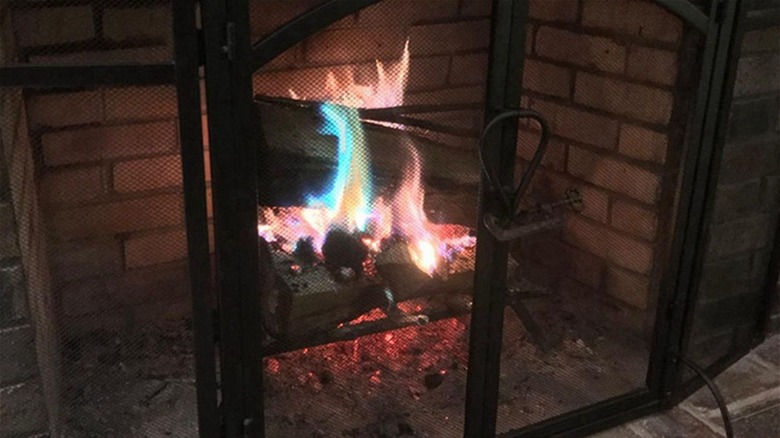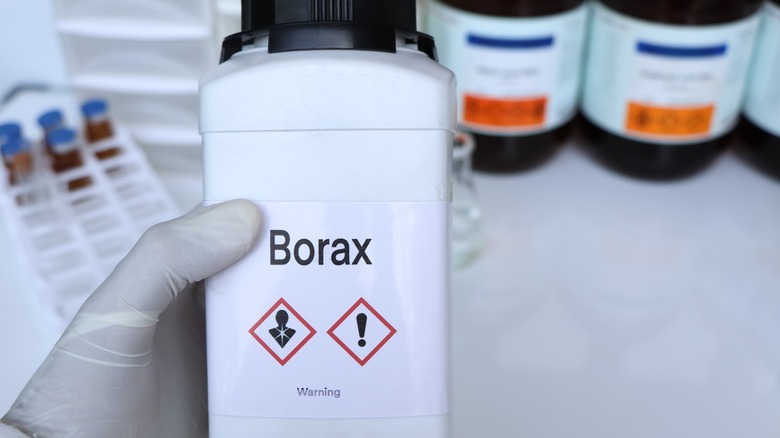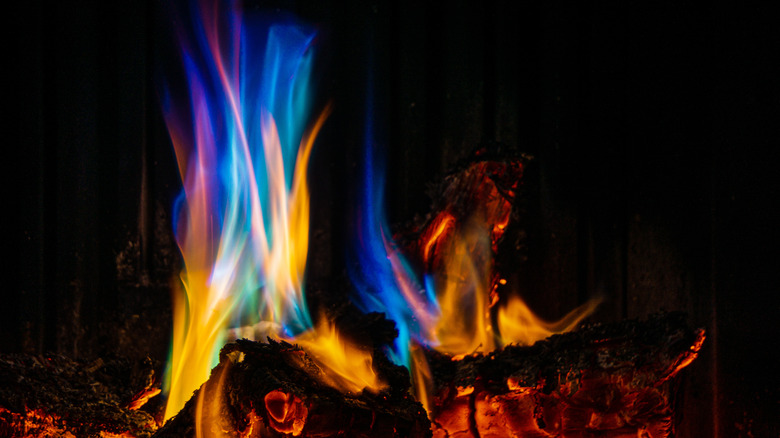Are Flame Color-Altering Pinecones Safe To Use In Your Fireplace?
The standard orange-yellow flames get monotonous fast when you're running your fireplace during the winter, but flame color-changing powders, logs, and pinecones promise to add an exciting new hue — or hues — to your fire game. If you've never used these pinecones before, you might wonder if they're safe to use indoors. The answer is yes — so long as you adhere to some simple rules and practices. Make sure that you employ safety measures around pets and children, know how to safely burn the pinecones indoors to prevent smoke inhalation, and take the right precautions if you regularly cook over your fire.
Add the color-blaze pinecones to the fire as you would kindling, and the smoke and flame they put off will resemble that of regular firewood. The cones are dried and coated with metal salts. As they burn, the metals in the salts react with the heat, releasing their unique display of color. Different elements create different colors. For example, sodium carbonate produces a bright yellow flame, whereas sodium borate (Borax) burns green. Incidentally, Borax mitigates creosote, the flammable resin released by pine wood and cones, and may potentially stop a chimney fire hazard before it starts, too. A win-win!
Take caution and play it safe
The substances primarily used in colored-flame-making pinecones are also found in household products, such as Borax, washing soda (sodium carbonate), and Epsom salts (magnesium sulfate), to name a few. It's a good idea to keep these products locked away from sticky young fingers or pet paws. It's obviously fine if you're using table salt (sodium chlorate) for yellow flames, but you don't want your new puppy or toddler getting into the bottle of root killer you're using for its flame-color-changing ingredient, copper sulfate; the compound is toxic if swallowed or touched.
Most of these chemicals are not food-safe, either. Never cook on a fire during or after burning these colorful pinecones. Rainbow flame s'mores might sound incredible, but keep the marshmallows, burgers, hot dogs, and all other food away from the fumes. Wash your hands thoroughly after handling the cones; better yet, wear gloves or use tongs to pick them up. Once the cones are burning, there are other issues to pay attention to. The smoke they produce may cause health issues if it's inhaled. If you're burning the pinecones indoors, the chimney should suck away the smoke; outdoors, always sit upwind from a rainbow-hued fire. If you take pride in your pristine fireplace, note that some chemicals may leave a colorful residue that stains your fireplace or chimney with prolonged use.
Instructions matter for color-altering pinecones
Another thing to consider is the disposal of the ashes. If you normally use your fireplace ash to repel pests or fertilize your garden, consider how the chemical coating on the pinecones might affect your plants. For example, copper sulfate produces a green flame but is also a common ingredient in herbicides, so using the fireplace ash should be okay if you just burned one or two pinecones in that particular fire. It's a different story if you burned a whole bag of pinecones. The dose makes the poison. Don't burn more than one pinecone hue in a single fire so that you aren't mixing chemicals together.
Always read the manufacturer's instructions, warnings, and chemical safety data sheet (where provided) front to back before tossing the chemical-soaked cones onto your fire. If in doubt, don't hesitate to look up each chemical listed on the packaging independently to learn about its properties and potential hazards. With all these safety measures firmly in mind, go ahead and buy yourself some to play with.


